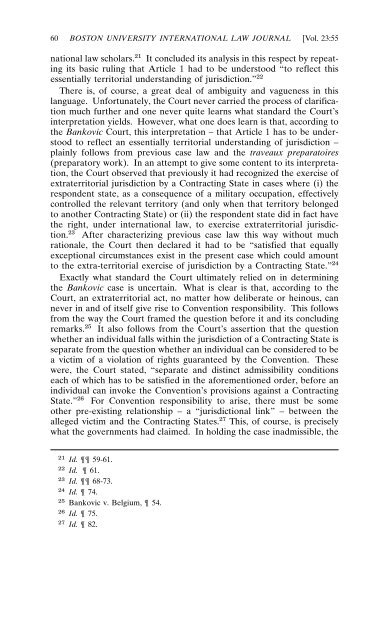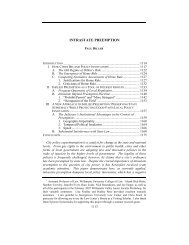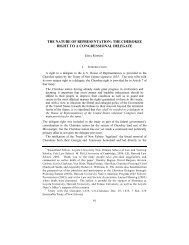THE NATO BOMBING CASE (BANKOVIC ET AL. V. BELGIUM ET AL ...
THE NATO BOMBING CASE (BANKOVIC ET AL. V. BELGIUM ET AL ...
THE NATO BOMBING CASE (BANKOVIC ET AL. V. BELGIUM ET AL ...
Create successful ePaper yourself
Turn your PDF publications into a flip-book with our unique Google optimized e-Paper software.
60 BOSTON UNIVERSITY INTERNATION<strong>AL</strong> LAW JOURN<strong>AL</strong> [Vol. 23:55national law scholars. 21 It concluded its analysis in this respect by repeatingits basic ruling that Article 1 had to be understood “to reflect thisessentially territorial understanding of jurisdiction.” 22There is, of course, a great deal of ambiguity and vagueness in thislanguage. Unfortunately, the Court never carried the process of clarificationmuch further and one never quite learns what standard the Court’sinterpretation yields. However, what one does learn is that, according tothe Bankovic Court, this interpretation – that Article 1 has to be understoodto reflect an essentially territorial understanding of jurisdiction –plainly follows from previous case law and the traveaux preparatoires(preparatory work). In an attempt to give some content to its interpretation,the Court observed that previously it had recognized the exercise ofextraterritorial jurisdiction by a Contracting State in cases where (i) therespondent state, as a consequence of a military occupation, effectivelycontrolled the relevant territory (and only when that territory belongedto another Contracting State) or (ii) the respondent state did in fact havethe right, under international law, to exercise extraterritorial jurisdiction.23 After characterizing previous case law this way without muchrationale, the Court then declared it had to be “satisfied that equallyexceptional circumstances exist in the present case which could amountto the extra-territorial exercise of jurisdiction by a Contracting State.” 24Exactly what standard the Court ultimately relied on in determiningthe Bankovic case is uncertain. What is clear is that, according to theCourt, an extraterritorial act, no matter how deliberate or heinous, cannever in and of itself give rise to Convention responsibility. This followsfrom the way the Court framed the question before it and its concludingremarks. 25 It also follows from the Court’s assertion that the questionwhether an individual falls within the jurisdiction of a Contracting State isseparate from the question whether an individual can be considered to bea victim of a violation of rights guaranteed by the Convention. Thesewere, the Court stated, “separate and distinct admissibility conditionseach of which has to be satisfied in the aforementioned order, before anindividual can invoke the Convention’s provisions against a ContractingState.” 26 For Convention responsibility to arise, there must be someother pre-existing relationship – a “jurisdictional link” – between thealleged victim and the Contracting States. 27 This, of course, is preciselywhat the governments had claimed. In holding the case inadmissible, the21 Id. 59-61.22 Id. 61.23 Id. 68-73.24 Id. 74.25 Bankovic v. Belgium, 54.26 Id. 75.27 Id. 82.









